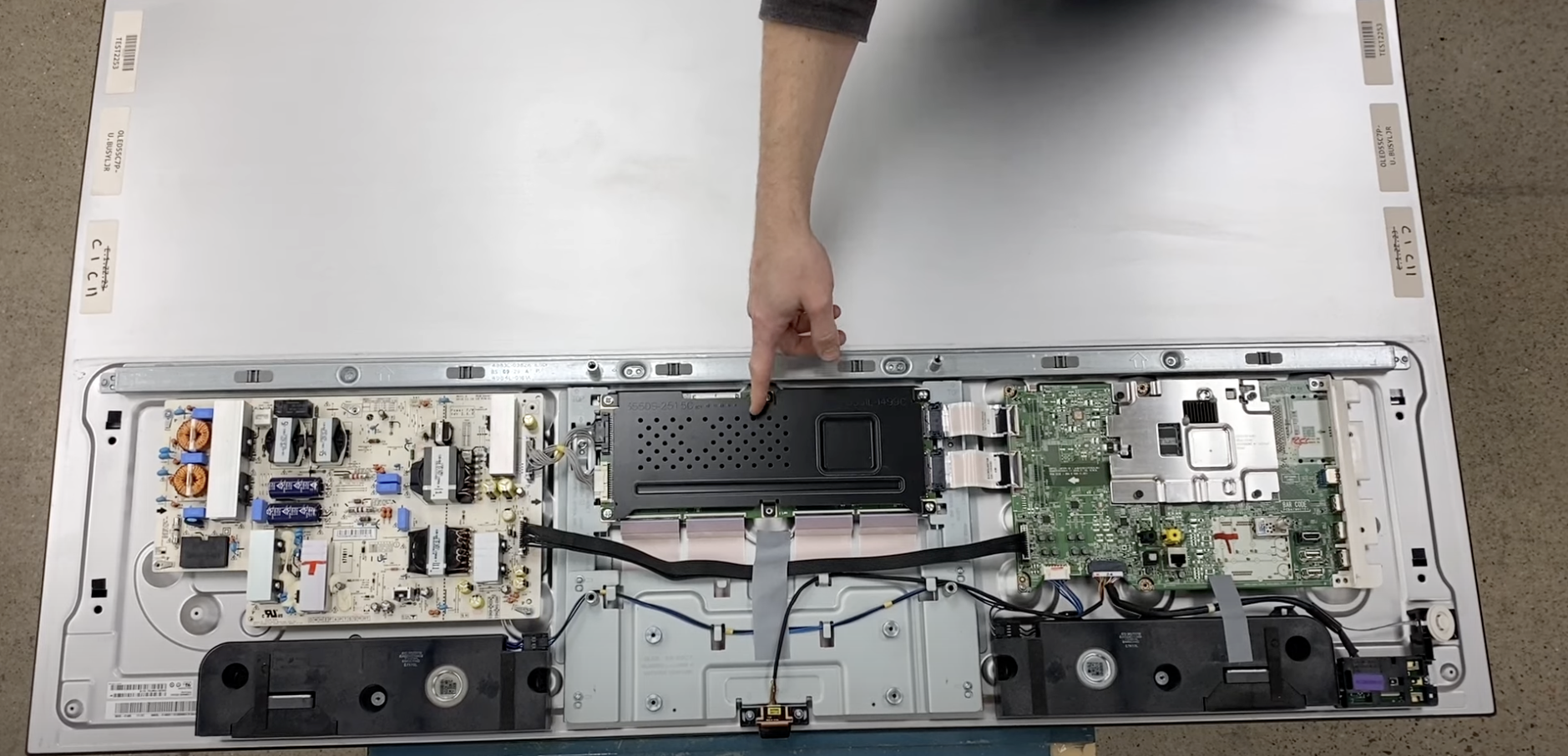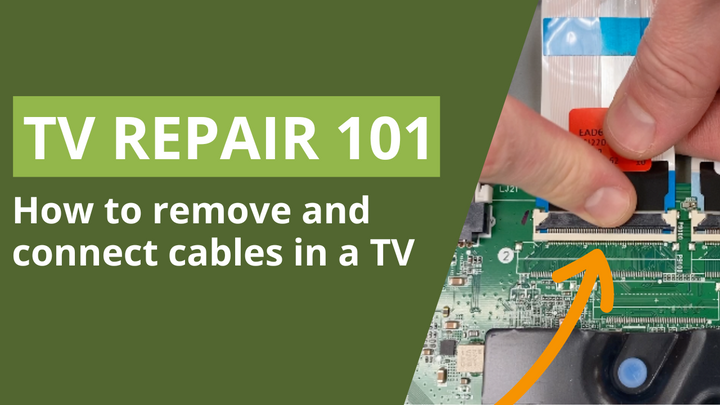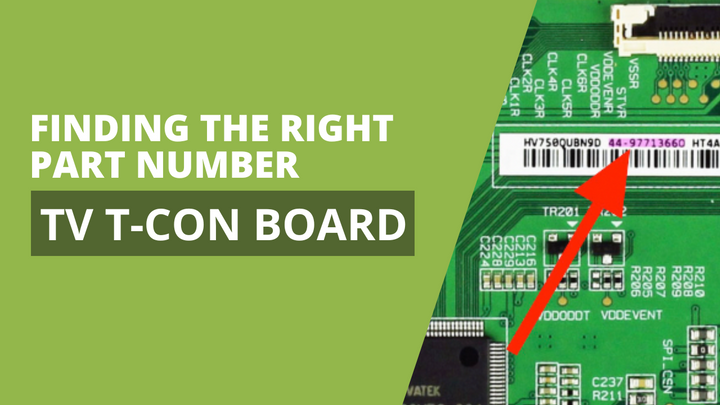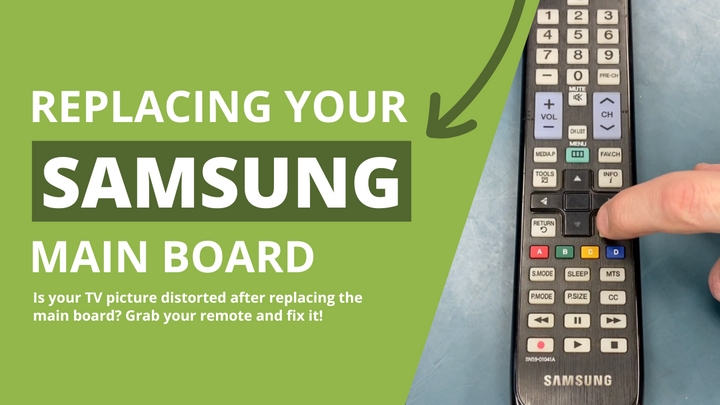How to Identify the Parts in an LED (and OLED) TV
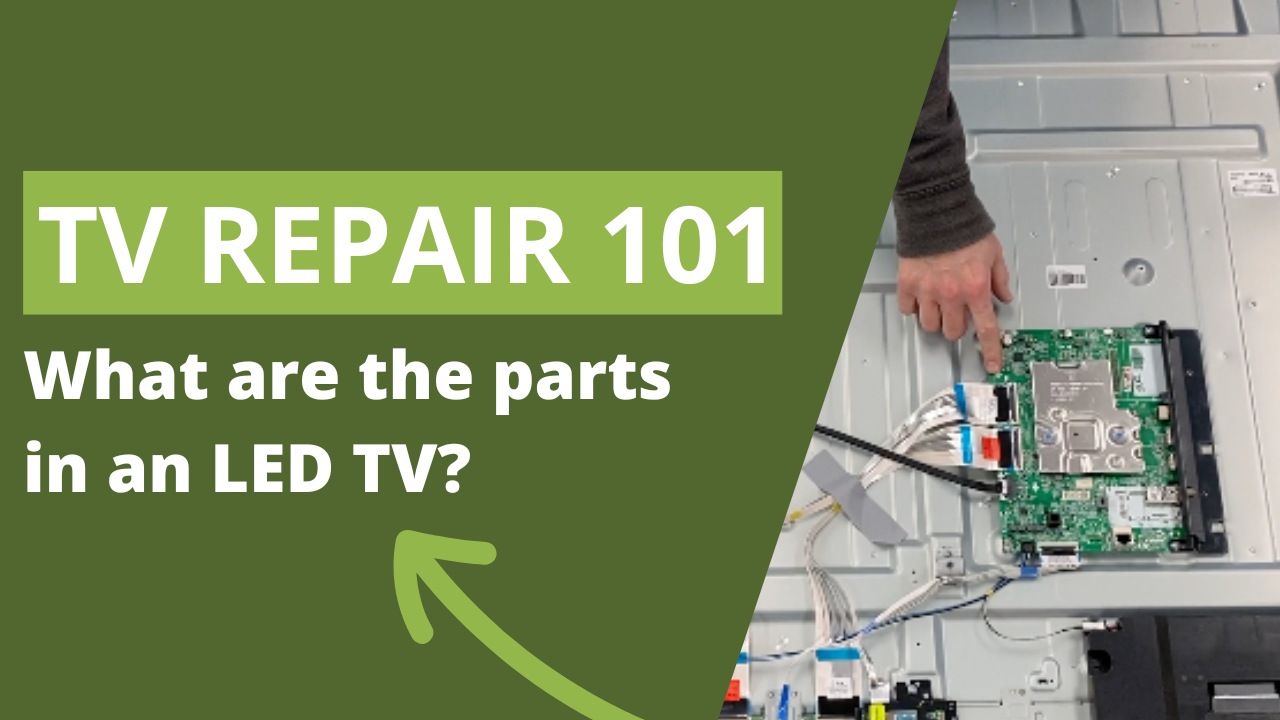
The construction of TVs is much simpler than in decades (or even years past), and it's a big reason why we're so excited and focused on making repairing TVs easy for everyone. With that said, the internal components and parts in LED and OLED TVs can vary from manufacturer to manufacturer and model to model. We'll walk you through each part and some of the major differences you may notice when opening up and repairing your LED TV.
What are the parts in an LED TV?
Most LED and OLED TVs have 8-10 main components: a power supply board, a main board, a wifi/bluetooth module, speakers, a key controller, an IR sensor, a T-Con board, an LED driver, LED strips, and the screen (panel).
In some TV models, the power supply board and main board will be together as one board. In other makes and models, the TV won't have a T-Con board. And, in some new models, some of the components will be in a separate box to minimize the TV's depth.
LED TV Examples
Let's look at a few different examples of LED TVs and their internal components. You'll notice some similarities and also some distinct differences.
Samsung LED TV
This particular Samsung model has eight parts. The first part we'll highlight is the power supply board. The power supply board takes the AC voltage from your outlet and converts it to various DC voltages needed to power everything else in your TV.
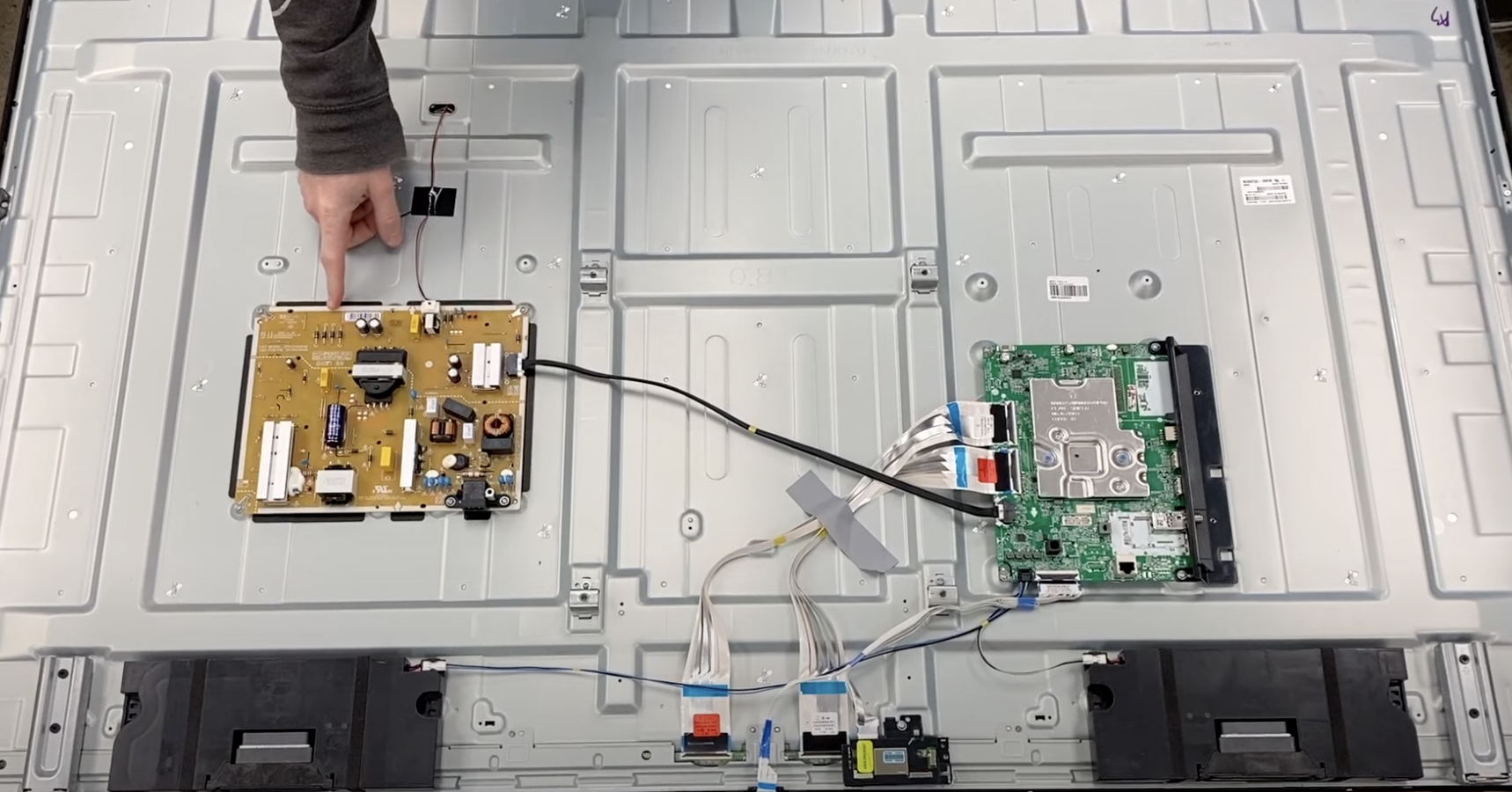
The next part in this TV model is the main board. The main board is basically the “brains” of your TV and controls everything, from the audio to video streams. All of the user data and settings are also stored on the main board.
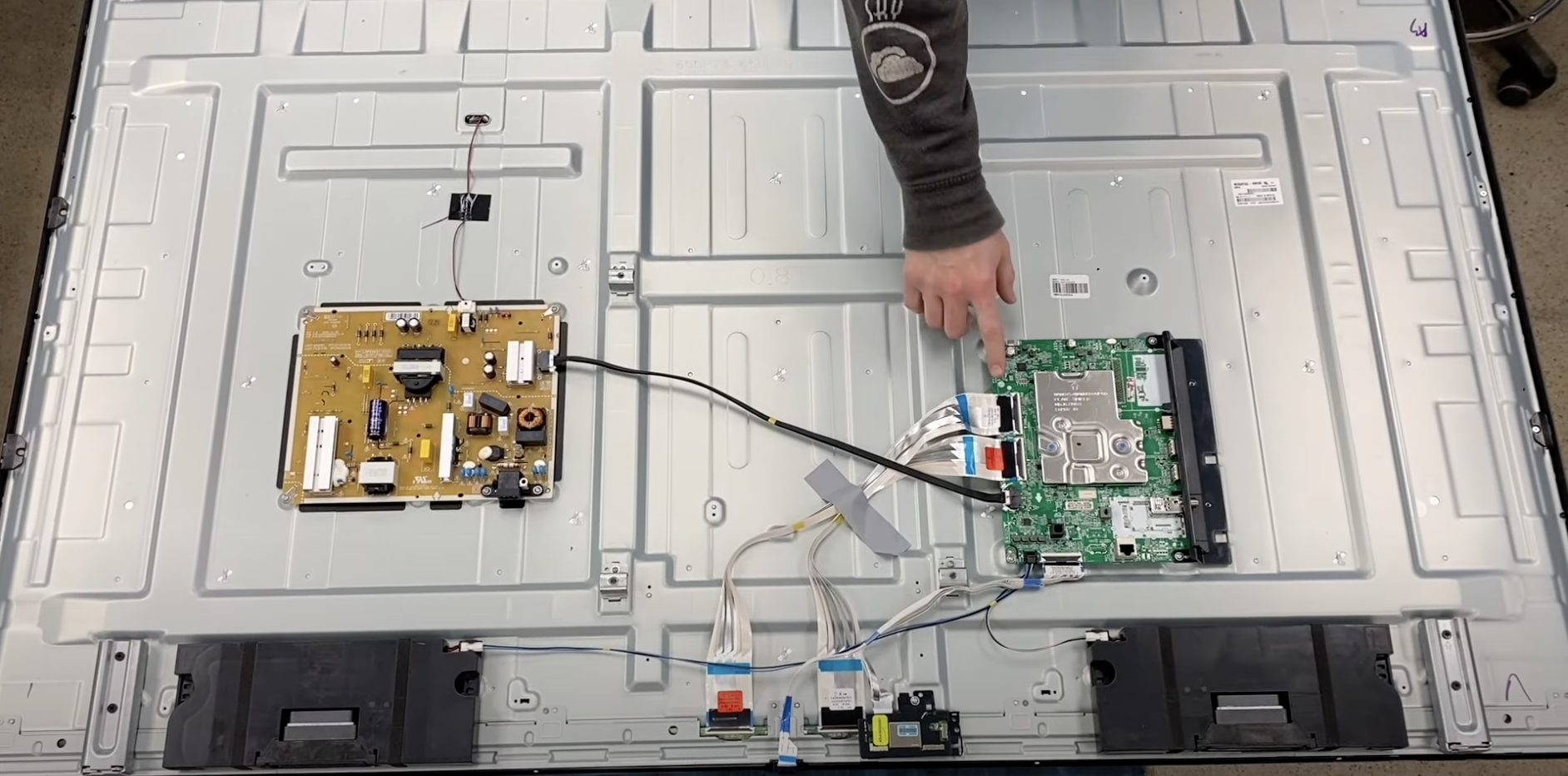
This TV model also has a wifi/bluetooth module. As you can probably guess, this component helps you connect to your local wifi network and any nearby bluetooth devices.
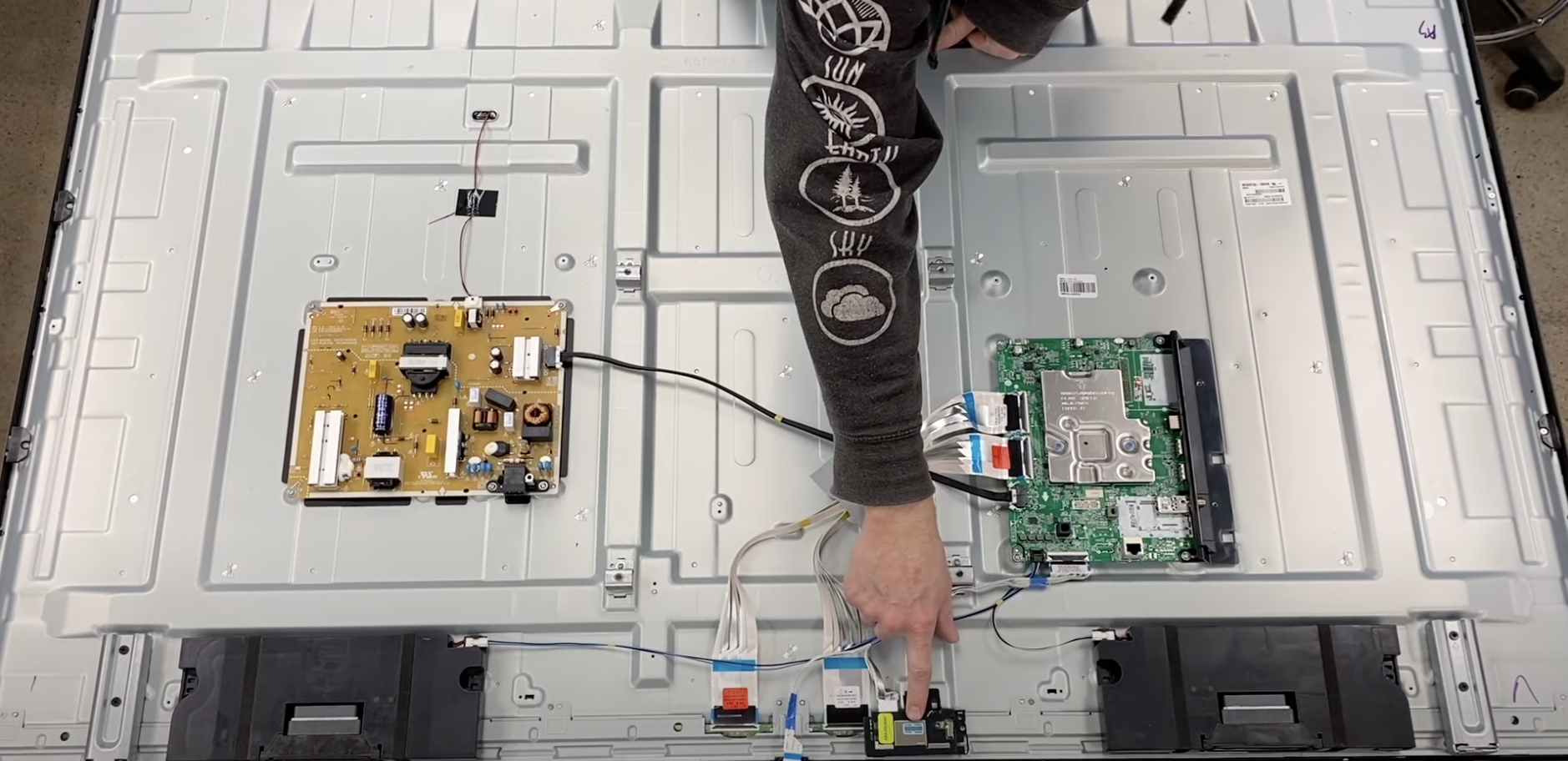
This model also has two speakers at the bottom of the TV.
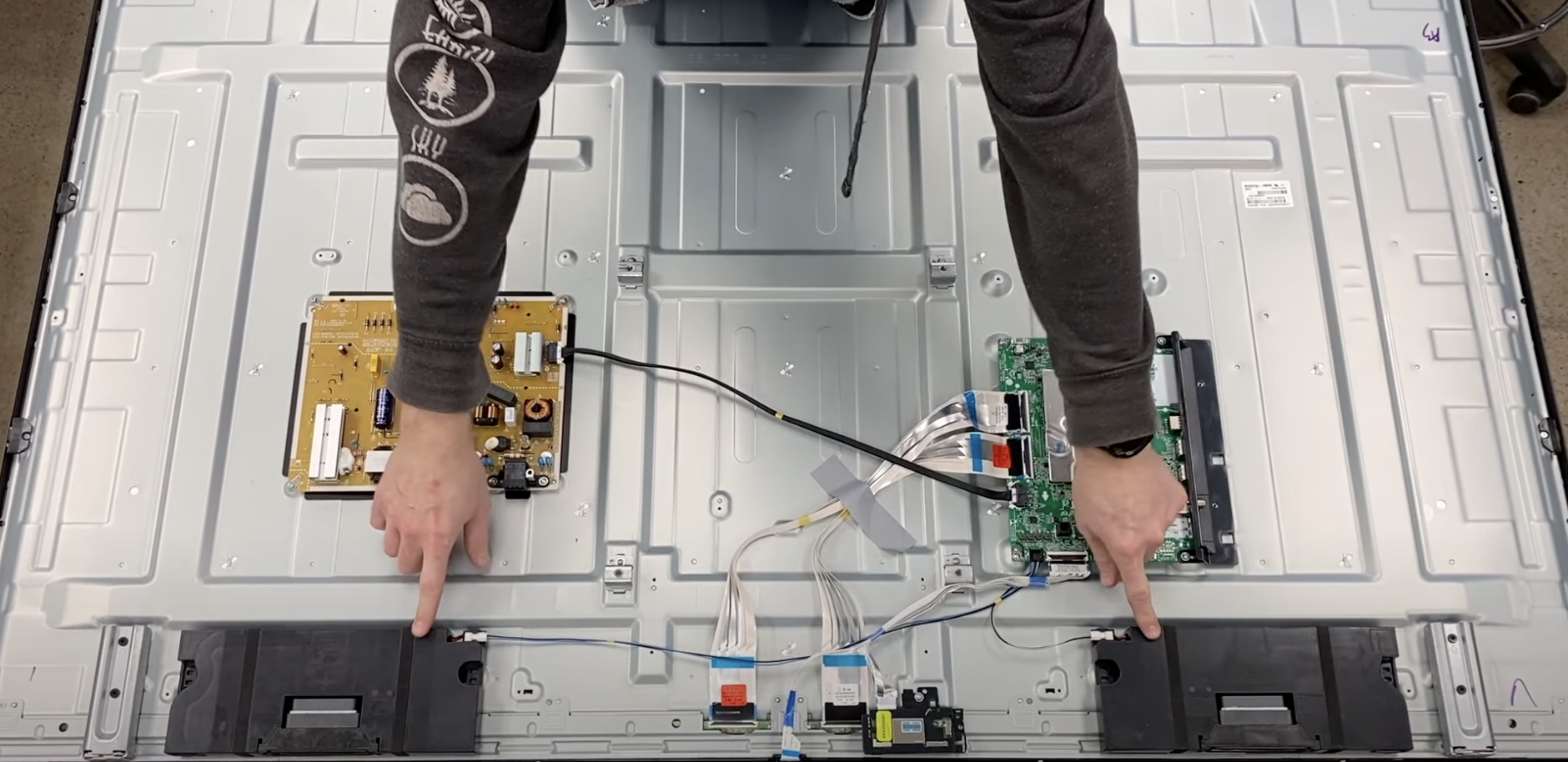
The next part we'll show you is the IR sensor. IR sensor is short for infrared sensor, and the sole purpose of the IR sensor is to receive the signal from your remote control and send it to the main board as an electronic signal.
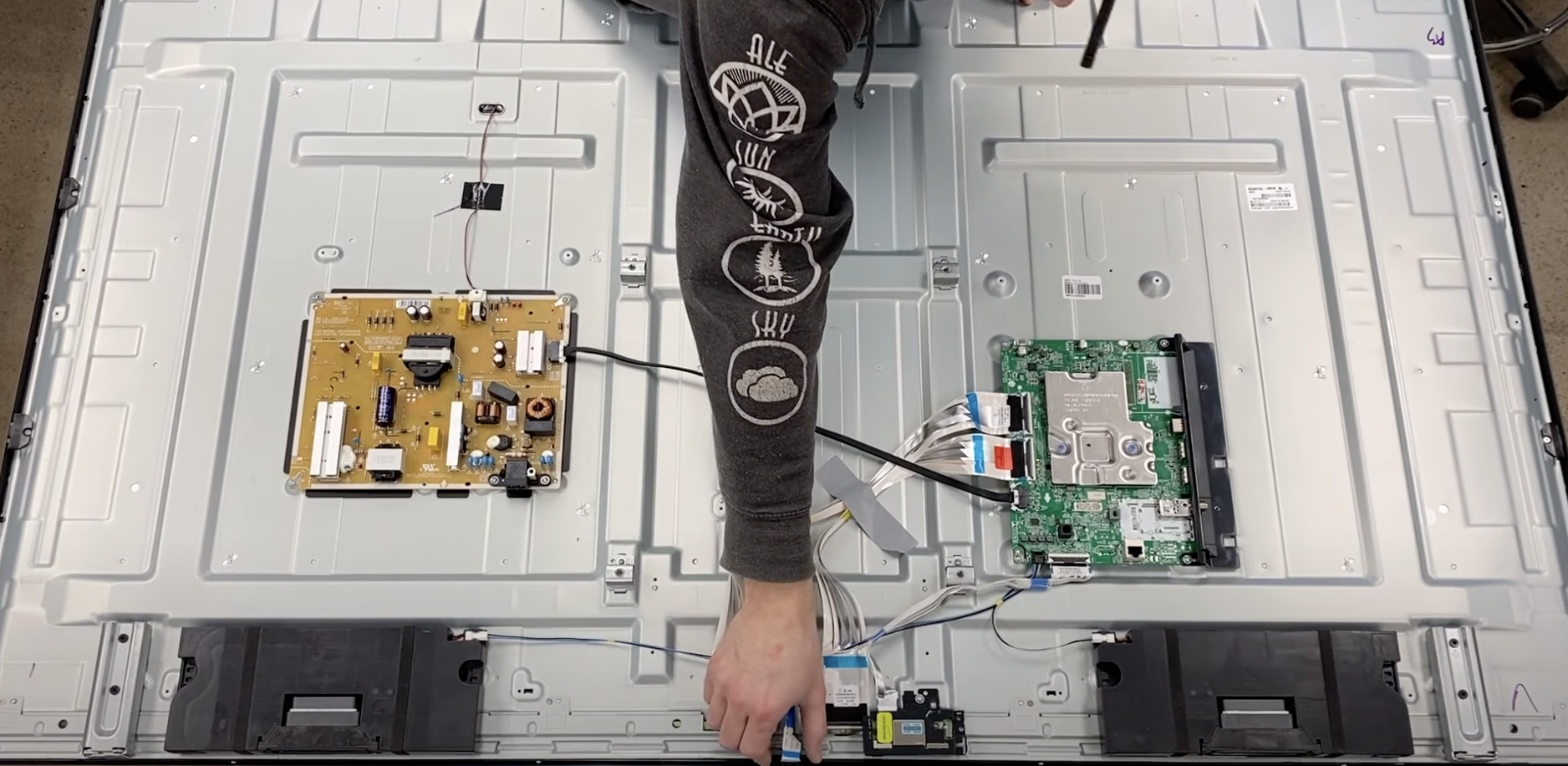
This Samsung TV model also has two address boards that are a part of the LCD panel. These boards help process video information for the LCD panel.

The last parts (not shown) are the LED strips inside the light case (or chassis). LED strips are the light source behind the LCD screen in LED TVs (or CCFL backlit TVs). These strips get their power from the LED driver or the power supply board and control the image brightness on your TV screen.
Hisense LED TV
We wanted to show you this specific Hisense model because it has a main board / power supply combo (all functions are on one board).
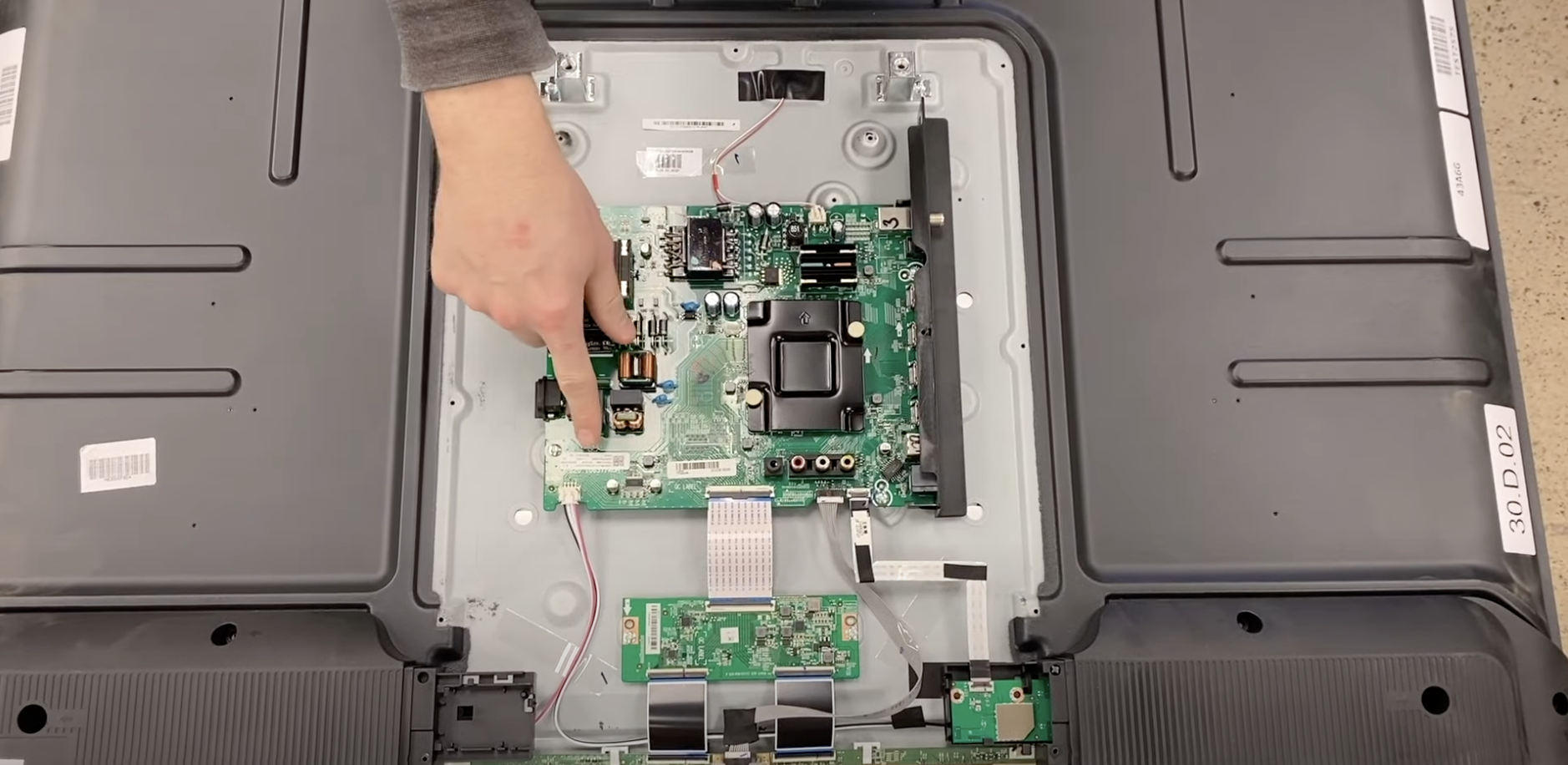
This model also has a separate T-Con board. A T-con board — short for “timing control board” or “timing controller” — is found in LED and CCFL TVs. This board converts the video signal from the main board and sends it directly to the screen to display the signal in the correct order and at the correct spot on the screen.
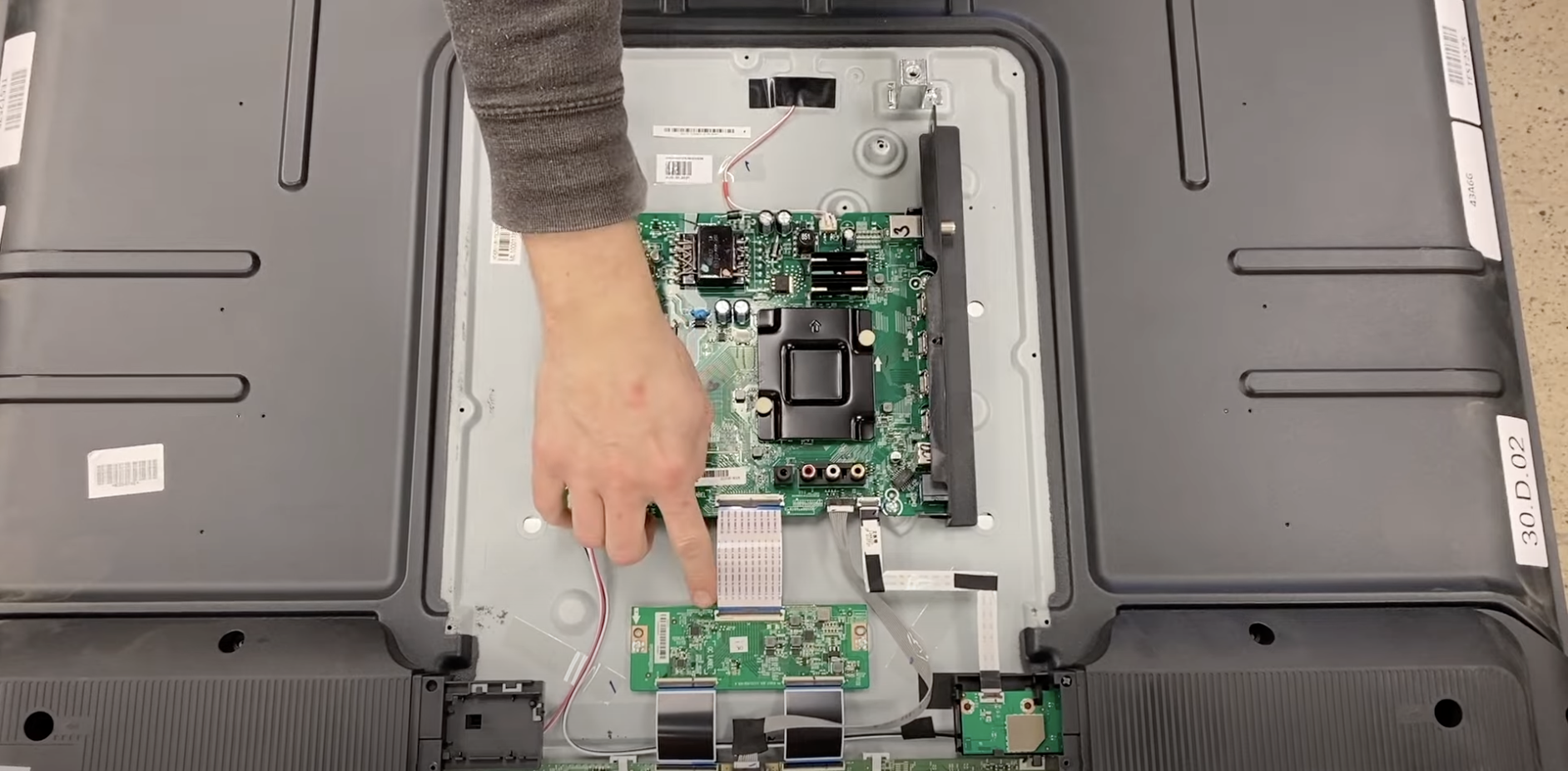
Samsung LED TV
This Samsung model is a little unique because it has a main board / power supply combo and doesn't have a T-Con board.
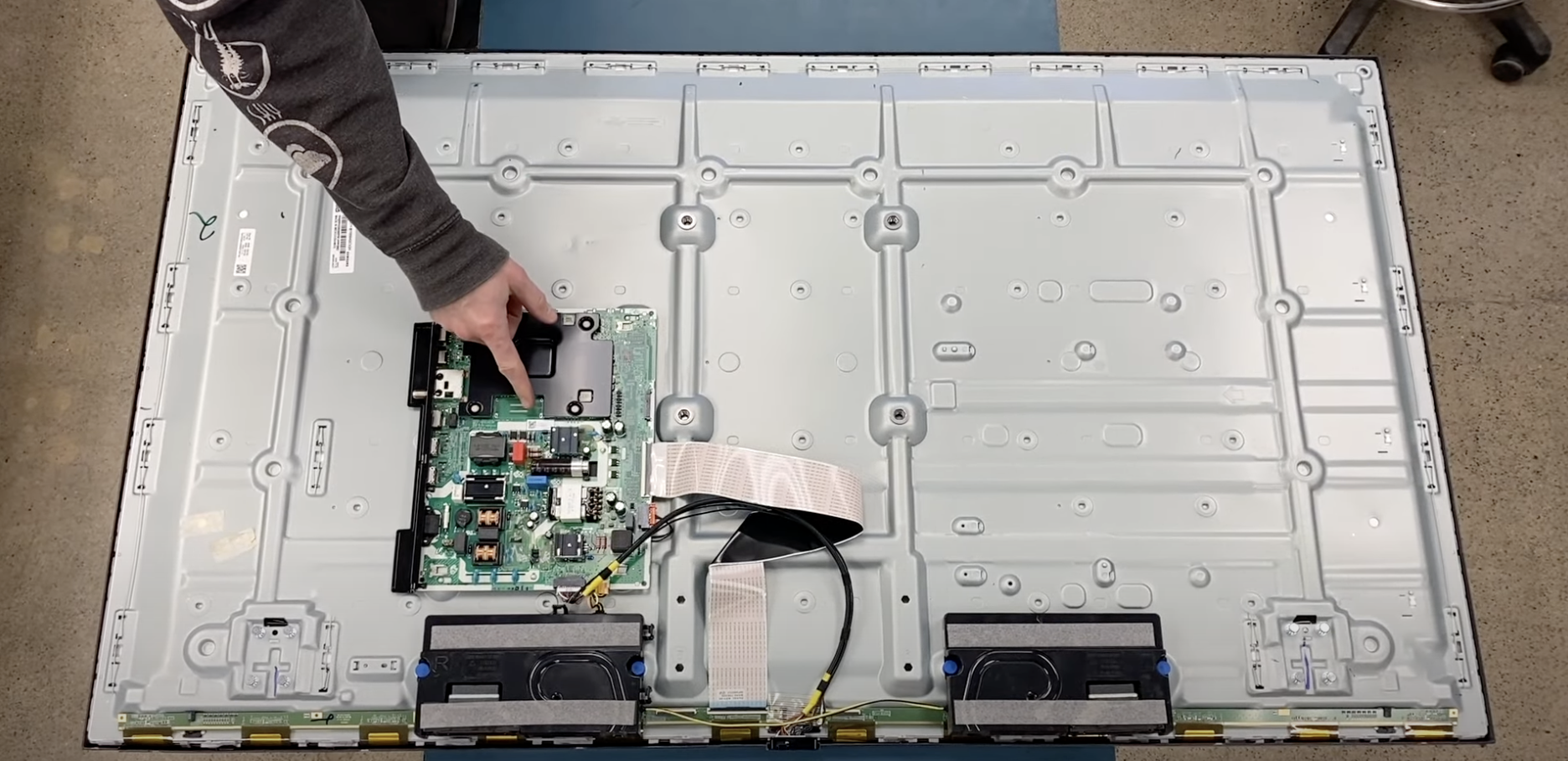
This TV's wifi module and IR sensor are also combined at the bottom of the TV.

Samsung One Connect LED TV
This specific Samsung model has a separate LED driver. LED drivers are found in LED TVs only and they control the LED strips/bars behind the screen. They control the power and the brightness of each section.
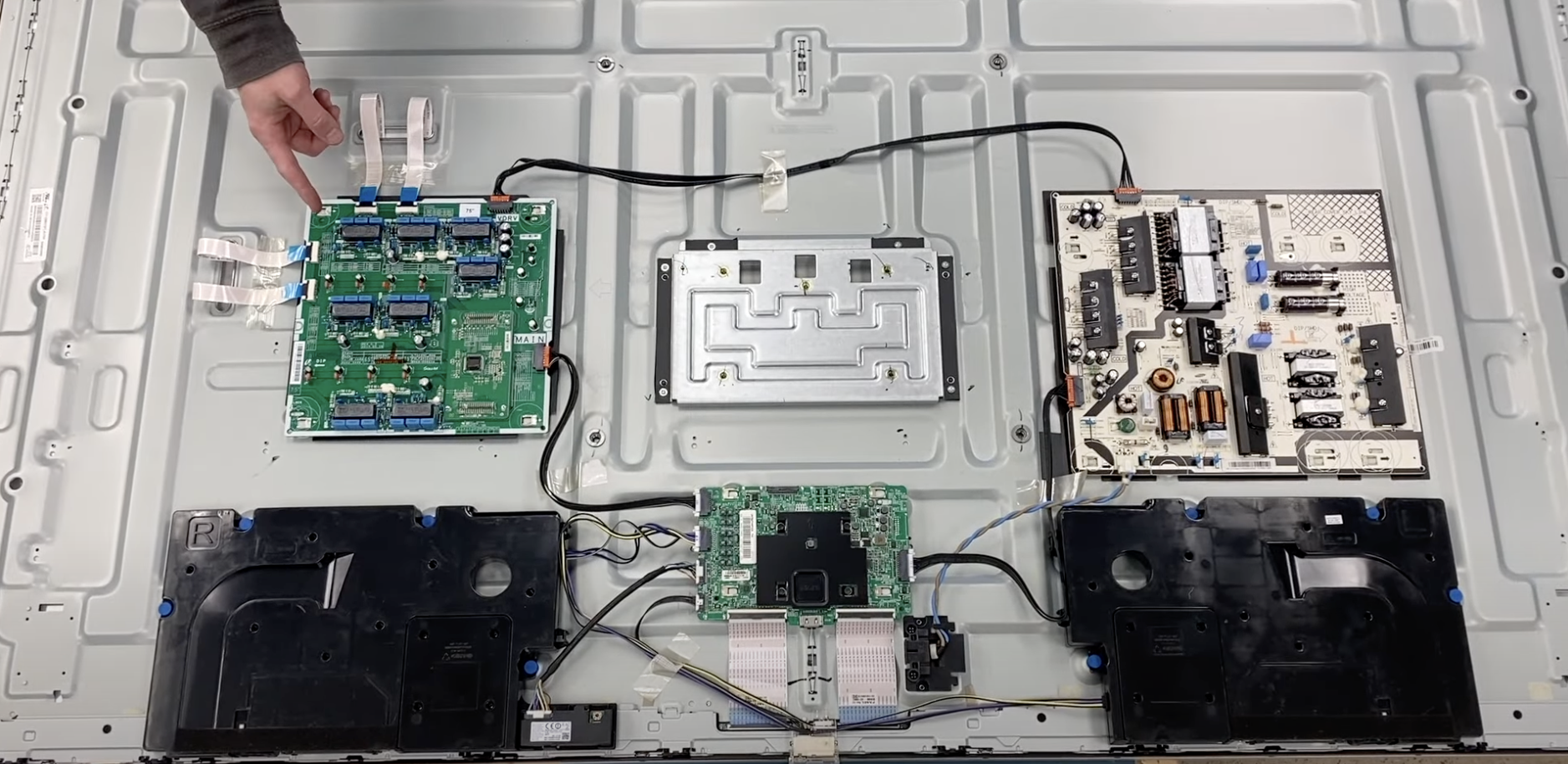
This model also has an external box that accepts all of the TVs inputs and has one cable that goes into the TV.
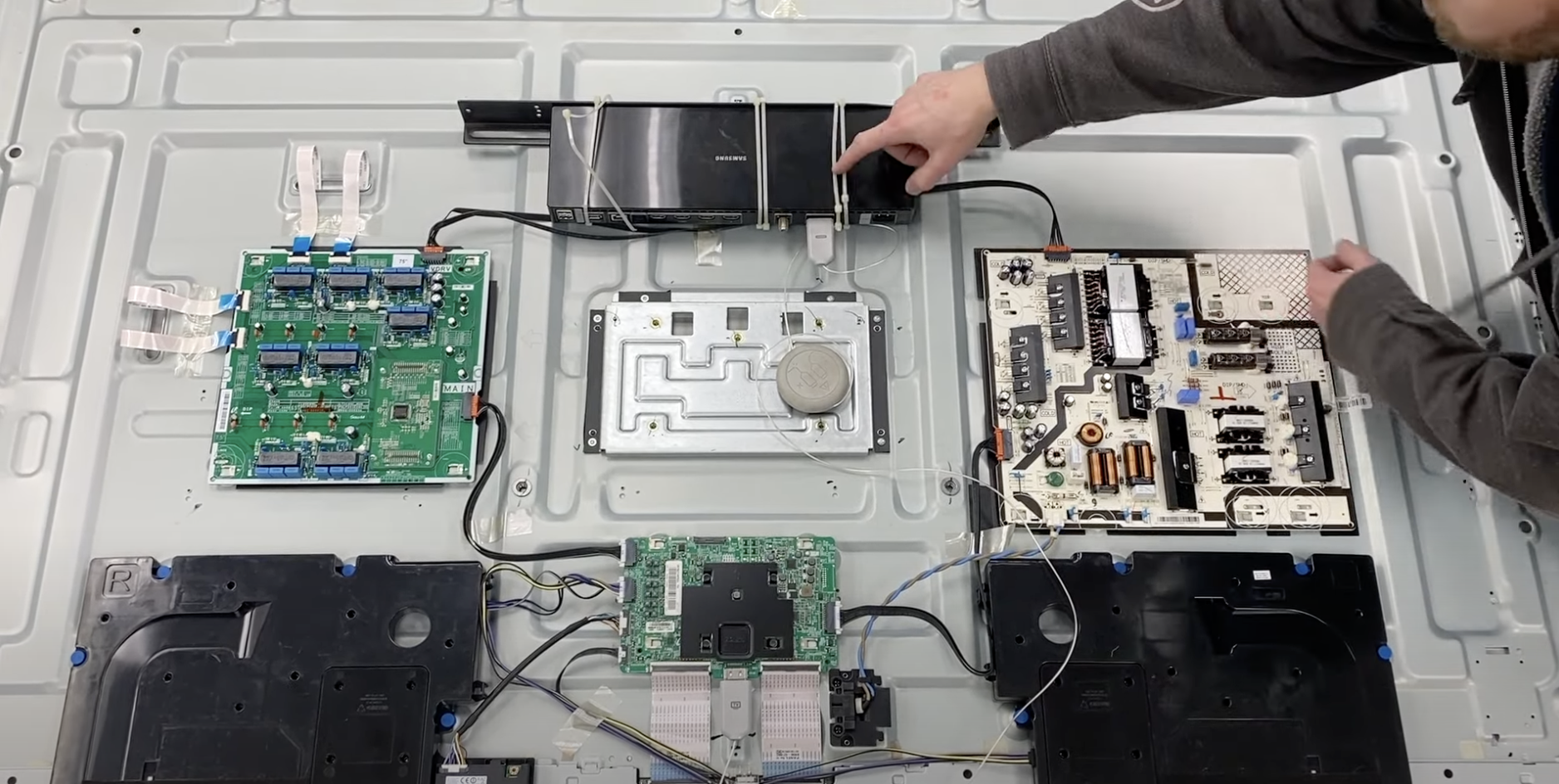
LG OLED TV
As you can tell in the image below, this OLED LG model has most of the common components and they're all individual parts (main board, power supply, wifi module, IR sensor, etc.). OLED stands for "Organic Light Emitting Diode" and each pixel emits its own light. This gives you blacker blacks and brighter whites (better contrast). However, they are also more prone to burn-in than LED TVs (kind of like plasma TVs).
One thing that's unique about this OLED model is that it has a T-Con board / signal driver.
